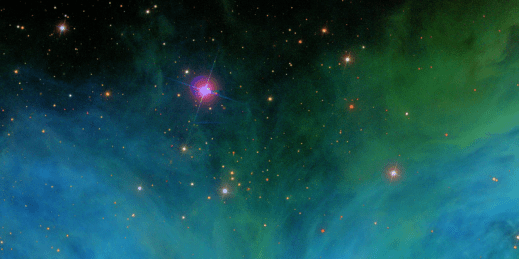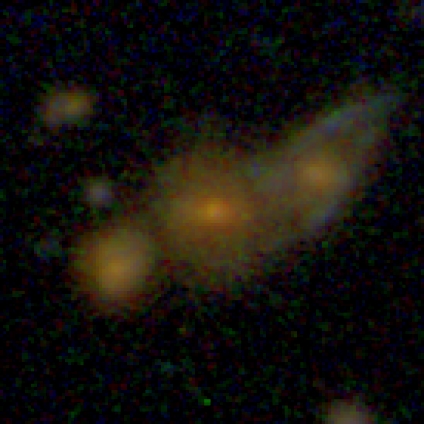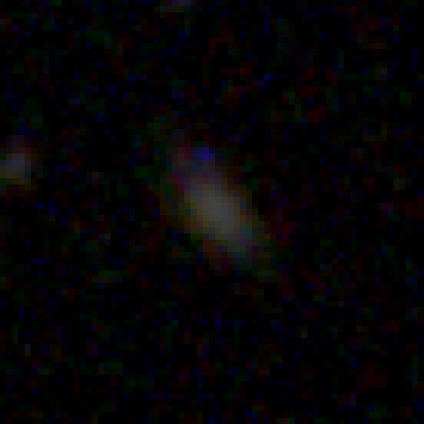How to Translate Galaxy Zoo
Not too long ago we announced that Galaxy Zoo has gone open source – along with several other Zooniverse projects. Part of that announcement was that it is now possible for anyone to translate the Galaxy Zoo website into their own language and have that pulled back into the main site. We love translation at the Zooniverse! Using GitHub (our code repository) means we can open up the translation process to everyone.
I’ve been answering a lot of emails about how this process works so I thought I would outline a tutorial here on the blog. To get started go to: https://github.com/zooniverse/Galaxy-Zoo/tree/master/public/locales and download the .json file corresponding to your language. If there is not yet one there you have two options:
- Clone the app locally from GitHub and run the translate.rb file in root
- If step 1 doesn’t make any sense then contact rob@zooniverse.org and we can create the file for you.
These JSON files are tree structures of strings in “key”: “value” pairs that contain all the translatable text on Galaxy Zoo. You need to translate just the values , which are the parts after the colon (:) shown in bold in the example chunk of the file below.
{
“zooniverse”: {
“browser_check”: {
“wont_work”: “This site probably won’t work until you update your browser.”,
“recommended”: “We recommend using <a href=\”http://www.mozilla.org/firefox/\” target=\”_blank\”>Mozilla Firefox</a> or <a href=\”http://www.google.com/chrome\” target=\”_blank\”>Google Chrome</a>.”,
“ie”: “If you use <a href=\”http://www.microsoft.com/windows/internet-explorer/\” target=\”_blank\”>Microsoft Internet Explorer</a>, make sure you’re running the latest version.”,
“chrome_frame”: “If you can’t install the latest Internet Explorer, try <a href=\”http://google.com/chromeframe\” target=\”_blank\”>Chrome Frame</a>!”,
“dismiss”: “Dismiss”
},
…
You do not translate the parts before the colon as these are the keys that are used to identify each string. so in the example you do not translate “zooniverse”, “browser_check”, “won’t_work, “recommended”, “ie”, “chrome_frame” or “dismiss”. Here’s the Spanish version of the above segment of the file:
{
“zooniverse”: {
“browser_check”: {
“wont_work”: “Es probable que este sitio no funcione hasta que actualices tu navegador.”,
“recommended”: “Te recomendamos usar <a href=\”http://www.mozilla.org/firefox/\” target=\”_blank\”>Mozilla Firefox</a> o <a href=\”http://www.google.com/chrome\” target=\”_blank\”>Google Chrome</a>.”,
“ie”: “Si utilizas <a href=\”http://www.microsoft.com/windows/internet-explorer/\” target=\”_blank\”>Microsoft Internet Explorer</a>, asegúrate que estés usando la última versión.”,
“chrome_frame”: “Si no puedes instalar la última versión de Internet Explorer, intenta usar <a href=\”http://google.com/chromeframe\” target=\”_blank\”>Chrome Frame</a>!”,
“dismiss”: “Dismiss”
},
…
Note that any quotation marks need to be escaped i.e. ” becomes \” – these files have to be valid JSON and there is a handy online tool for validating this at http://jsonlint.com/ – here you can paste in the whole file and it will tell you where there are any formatting errors if you have any.
There is very little scope for doing language-specific formatting on the website. This means that if text is too long when it’s been translated it may run off the page or be cut-off on the screen. Because of this, you need to keep the translated strings to approximately the same length. If this causes issues let us know. To test out the translation and see how it looks, which you’re welcome to do ant any time, you can either email your current file to rob@zooniverse.org or run the Galaxy Zoo app locally by cloning it from GitHub (https://github.com/zooniverse/Galaxy-Zoo/).
We also have an email list for Zooniverse Translators. If you’d like to join it in order to ask questions of other translators and hear about other projects you might want to translate then email rob@zooniverse.org. If you are planning on doing a translation it would be worth joining the list to coordinate with other translators in your language.
NOTE: If you’re familiar with GitHub, you can clone the Galaxy Zoo repo, create a local JSON file for your language and just submit a Pull Request when you’re ready. You can find the translation-creator script here.
When your translation is complete will find find an astronomer somewhere in the world who speaks your language, in order to double-check (peer-review!) the new text and give feedback. This is done to ensure that the site is still conveying the original meaning and acts as a good error-checking mechanism.
Good luck with your translation, and thank you! Hopefully we can open up Galaxy Zoo to many more people around the world.
Oh, Sweet Spiral Of Mine

See the video of our latest hangout here (or, if you prefer, click to download the podcast version):
Spiral galaxies are seemingly endless sources of fascination, perhaps because they’re so complex and diverse. But why does spiral structure exist? Why do some spiral galaxies have clearly defined spiral arms and others have flocculent structure that barely seems to hold together? What’s the difference between a 2-arm spiral and a 3-arm spiral? How many kinds of spirals do we actually observe? And what is happening to the stars and gas in spiral galaxy disks?
All of the above questions are related to a question we got right at the end of our last hangout: what is the significance of the number of spiral arms? Determining how many spiral arms a galaxy has is hard, and is often subjective — so why bother?
It’s a good question. Part of the reason spiral arm classification & count is a challenge is that it often depends on the wavelength at which you observe a galaxy. New stars tend to form along the spiral arms, whereas older stars have time to spread out into more uniform orbits. So ultraviolet observations of a galaxy, which tend to pick out the new and bright stars, often highlight the spiral arms much more strongly than longer-wavelength observations, which see more light from older stars.
It’s not quite that simple, though. As you get to longer and longer wavelengths, you start to pick up the heat radiated by clouds of gas and dust, which are often stellar nurseries — and often trace spiral arms. At a wavelength of 21 centimeters you can detect neutral Hydrogen, which provides raw material for the cooling and condensation of gas into cold, dense molecular clouds that form stars in their densest pockets. Each wavelength you observe at provides a glimpse at a different targeted feature of a spiral galaxy.
Including our own, of course: we live in a spiral galaxy (though how many arms it has, and whether it’s flocculent, is a matter of debate), and it provides the best means of studying star formation up close. When studying other galaxies, it’s easy to get caught up in the race to discover the biggest, the smallest, the farthest and the most extreme, and forget that our own Universal neighborhood is pretty amazing too.

Herschel sees much longer wavelengths than HST, so its resolution isn’t as high even though it has a bigger mirror. (Click to see a larger version.) Credit: ESA/NASA
For example, one of the most famous nebulae in the world was recently imaged by one of the most famous telescopes in the world — again — but this time in the near-infrared. The Horsehead Nebula is a well-known feature in the Orion star-forming complex, and the new Hubble images provide a great opportunity to learn even more about this region that has been studied for hundreds of years. How thick and cold is the gas and dust in the nebula? How long will it take for it to dissipate under the harsh radiation of the bright, young stars near it? What’s going on behind it?
The near-infrared view from HST is sort of the sweet spot in this spectacular space — the wavelengths aren’t so long that the resolution suffers, but they are long enough that you see through a bit more of the clouds than in the optical. So you see more of the structure of the cloud itself, and more of where it’s thin and thick. If you zoom in, you can even see distant galaxies peeking through! And not just on the edges: in some parts you can see galaxies through the middle of the nebula. Wow. This image alone contains spiral galaxy insights big and small, near and far, from the very distant universe and right in our own backyard.
Note: right at the end of the hangout, we again got another great question from a viewer that we didn’t have time to answer. So stay tuned for the next hangout when we just might have a thing or two to say about dark matter, dark energy and new projects!
Next GZ Hangout: Thursday, April 25th, 18:30 GMT
Our next hangout will be on Thursday the 25th of April at 6:30 p.m. GMT, which is 11:30 a.m. Pacific Daylight Time, 2:30 p.m. Eastern Daylight Time, 7:30 p.m. British Summer Time, 8:30 p.m. Central European Time and 9:30 p.m. Central African Time.
Just before the hangout we’ll update this post with the embedded video, so you can watch it live from here. Last time we had some great live tweets from volunteers during the hangout. If you’re watching live and want to jump in on Twitter, please do! we use a term you’ve never heard without explaining it, please feel free to use the Jargon Gong by tweeting us. For example: “@galaxyzoo GONG big bang nucleosynthesis“.
In the meantime, please feel free to leave a question in the comments section below. See you soon!
Update: view the summary and video here!
Cross Post from the Zooniverse Blog: Galaxy Zoo is Open Source
I just wanted to add a link to a post by Zooniverse Technical Director Arfon Smith over on the Zooniverse blog:
Please go there to read it.
This development means coders can “fork” their own versions of the Galaxy Zoo code and help (for example) translate the site into other languages, providing another way for people to contribute to the great science coming out of Galaxy Zoo.
Using Galaxy Zoo in the Classroom

Recently Jen Gupta, ICG Portsmouth’s Outreach Officer, wrote a very useful description of Navigator, a new tool for using Galaxy Zoo in the classroom (brought to you by Zooteach).
Jen’s excellent post shows many example screenshots of Navigator at work, and goes into much more detail about how to use it. Read Jen’s post here.
I’ve now used Navigator twice, once for an open evening in Oxford and once for a STEM festival at a school in Hampshire. The formats were very different: at the student open evening we gave 15-minute presentations that included classifying and then using Navigator to show and discuss the students’ classifications. The festival had about 1700 attendees in total, and Zooniverse was just one exhibit, so we had people wandering in and out in groups large and small. In Oxford we set up several computers for the students to use, and at the festival we had several iPads to go along with the desktop machine hooked up to the projector. But all were classifying in the group, and as the day went on we amassed more and more classifications to talk about.
So far I’ve found Navigator is really useful for two things in particular:
- Discussing classification difficulties and distributions: the My Galaxies tool will show you how the group’s classification of a particular galaxy compares to whatever other classifications exist for that object. Sometimes a galaxy has one clear classification that stands out, and other times it looks like nobody really agrees about whether it’s smooth versus featured. You can use that to talk about why it’s important to have so many people classify one galaxy, and how it relates to how confident you are in your own classification (and why it means you should still classify even if you aren’t sure).
- Making and testing predictions: The open night was for students about age 10, so many of them didn’t really even know what a galaxy was. The festival had students of all ages and plenty of adults as well. I showed some examples and explained that astronomers think elliptical (smooth) galaxies are made by merging two smaller galaxies together in a violent collision. From that you can predict that smooth galaxies should be bigger and brighter than featured galaxies on average, if you often make a smooth galaxy by crashing two featured galaxies together. You can use the Histogram tool to plot absolute brightness of smooth versus featured galaxies and see whether that prediction turns out to be true. (But remember that with magnitudes, more negative actually means brighter!)
I’m still pretty new to using Navigator, but I can already tell it’s a powerful educational tool and I can’t wait to see what people do with it!
More Hubble Features, and More Often!
Here at Zooniverse HQ we’ve been thinking a bit more about those “fuzzy blobs” we talked about during our last hangout. Many of those faint galaxies are among the most distant objects we’ve ever seen, so we really want to learn about how they’ve formed and what they look like, but in some cases they are just too faint to get a really detailed classification. We can probably learn what their overall shape is, and possibly tell whether they’re disturbed or interacting, but spiral arms? Bars? Bulge strength? Not likely. Read More…
Next GZ Hangout: Wednesday, 10th April, 19:00 GMT
We’re trying a new time for our hangouts to make it easier for those of our viewers in North America to tune in live. Our next live hangout will be on Wednesday the 10th of April at 7 pm GMT. That’s 9 pm in Europe, 8 pm in the UK, 3 pm EDT and 12 pm PDT. Even if you live in Hawaii you won’t have to skip your morning cuppa to hang out with us (9 am HST)!
Update: The video link and the summary post (also with a video link) are here.
If you have any questions you’d like the science team to answer live on the air, please feel free to leave a comment below, or tweet them directly @galaxyzoo. During the hangout, if we use a term you’re not familiar with, you can use the jargon gong by tweeting at us too. For example, “@galaxyzoo GONG laser guide star” would have been perfectly appropriate during the last hangout. Go on… gong us! We like it!
Talk at International Astronomical Union – video and write up now available.
Way back in August I gave a evening (public) plenary talk about “The Zoo of Galaxies” at the 28th General Assembly of the International Astronomical Union. I wrote a couple of blog posts about it at the time (here and a bit more here). Just this week I got word that the video is now available, so here it is:
To go with this I have also posted the “proceedings” (a write-up based on my talks) which will be appearing in the 16th Volume of “Highlights of Astronomy”. This is available on the arxiv. It’s not supposed to be a transcript as such, but if you watch both the video and read this I think you’ll see they’re quite similar.
Blood Oranges are just like Hubble Galaxies

Astronomers always want better images. Sometimes it’s possible right away; other times doing better requires new technology and/or waiting for the next generation of telescopes. We have both kinds of “fuzzy blobs” in Galaxy Zoo, and during this hangout we showed several examples. For a couple of hangouts now we’ve been meaning to address some of the most frequently asked questions about the faintest, most distant galaxies we ask volunteers to classify:
- what are they?
- why are the images so fuzzy?
- can we get better images of them now or in the future?
Given the data we have, the short answer to the first question is that we don’t yet know for sure — and, perhaps most importantly, we don’t need to know all the details. We can learn quite a lot from classifying even faint, fuzzy objects. Some of the faint galaxies on Galaxy Zoo are among the most distant galaxies ever imaged by the Hubble Space Telescope, and we don’t necessarily expect them to look like galaxies we see more nearby, so classifications from our volunteers are helping us to understand them even when we don’t have all the information we might want.
And what would it take to give us the information we want? What’s the future of astronomy after Hubble? How can we get better data than we have right now? Do we need to go into space to do it? (And what else are we working on right now, anyway?) Answers given in the video:
This is a great time to be working on Galaxy Zoo: there’s plenty to classify and analyze, and — of course — plenty to discuss. So stay tuned for next time!
Note: for those who prefer audio only, here’s a link to the podcast version.










